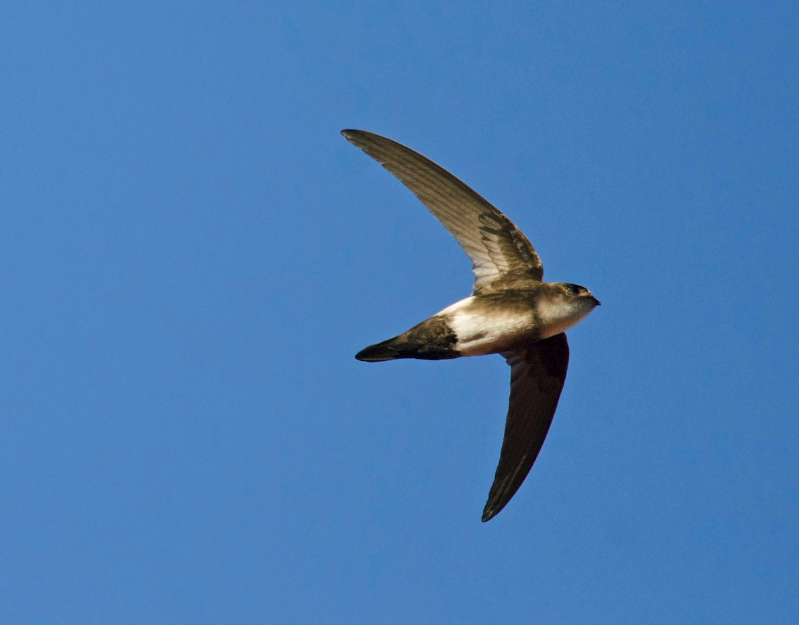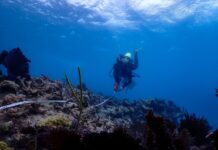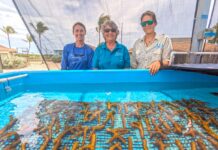By Callie Guillory
By 8 a.m. on July 23, only a handful of birders were still milling around the intersection of Peachtree and Morton streets on Grassy Key. Earlier the same morning there were twice that many. The area has been a hotspot since July 15, when Shirley Wilkerson posted a sighting of the Antillean Palm-Swift on Grassy Key to ebird.org. The announcement went viral.
According to the same website, it’s a “mega rarity” — last spotted 47 years ago at the Key West Cemetery.
Because of its special status, the bird has attracted bird watchers from around the Keys and around the country.
“I traveled to Grassy Key to see this rare bird because it’s on my ‘life bird list,’” said Ken Walsh of Philadelphia, a member of the Delaware Valley Ornithological Club and dedicated birder for the past 45 years.
What’s a life bird list? Well, it’s like a bucket list, but for birders.
Nicole Koeltzow arrived on Grassy Key wearing a shirt blazoned with “Got 700?” She said the slogan refers to the number of birds she has identified on her own bird list. (Wow!) The Washington native said she was a participant in the World Series of Birding.
“One of the cool things about watching birds is that there is no guarantee you’re going to see what you came for,” said Walsh, adding that there is no telling what other species you might see while waiting for that special bird to arrive.
Paul Waller also reported the sighting on Grassy Key on Facebook, identifying it as a “Code 5” rarity, which means, according to the American Birding Association, a “species recorded five or fewer times in the ABA Checklist Area, or fewer than three records in the past 30 years.”
That’s pretty rare.
Mark Hedden, executive director of the Florida Keys Audubon Society, said it was enough to make the drive from Key West to the Middle Keys.
“Chasing rarities isn’t really my thing … but it’s in the Keys? How can I not go look for it?”
Hedden said there are two things that make a bird special — it’s either somewhere it’s “not supposed” to be, or it is endangered. In the case of the Antillean Palm-Swift, it’s the former.
“This one probably came from Cuba or Jamaica or the Bahamas. I’ve seen this species in Cuba,” he said. “But every once in a while, a bird gets a wild hair and goes somewhere else. It’s the same mechanism that fuels evolution. There’s always an individual that likes to wander, and that’s when species separation happens. That’s why we have 10,000 species of birds. Of course, that takes 4,000 years to happen, so this sighting on Grassy Key is a small version of that process.”
“I traveled to Grassy Key to see this rare bird because it’s on my ‘life bird’ list; this bird is the reason we are all here.”
— Ken Walsh, Philadelphia
U.S. birders like the chance to spot a bird not normally found in the contiguous United States. Ray Sharpton drove all the way from New York to see the Antillean Palm-Swift. He quickly bonded with the other birders on Grassy Key. As a group, they are encouraging others to take up the hobby. They said it requires interest, patience and binoculars.
“And a copy of the ‘Sibley Field Guide to Birds,’” Sharpton said.


























